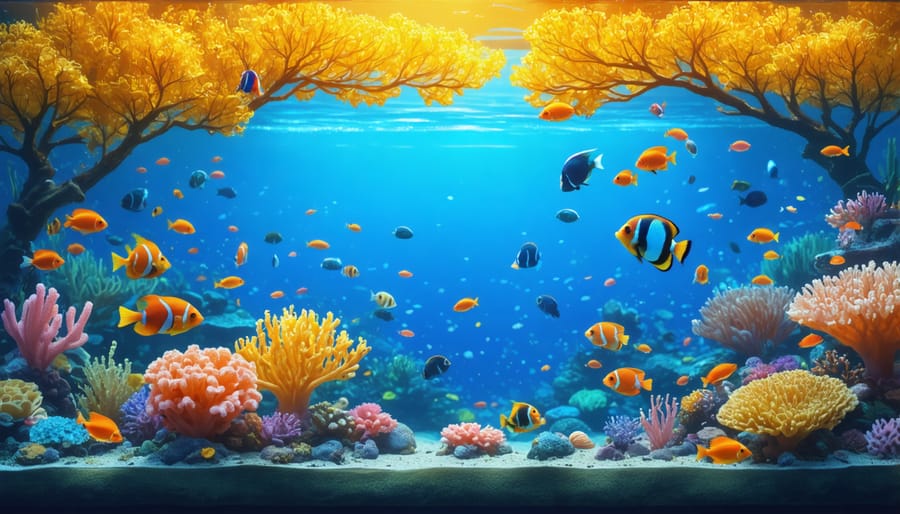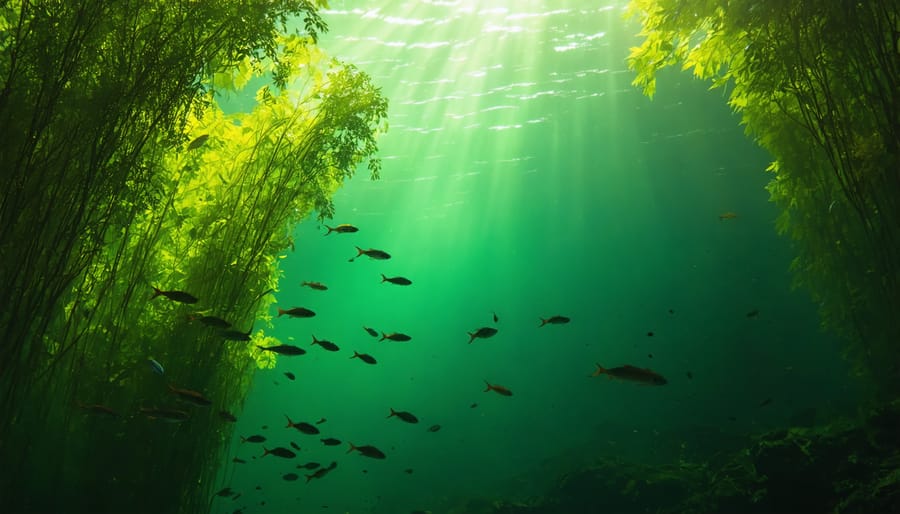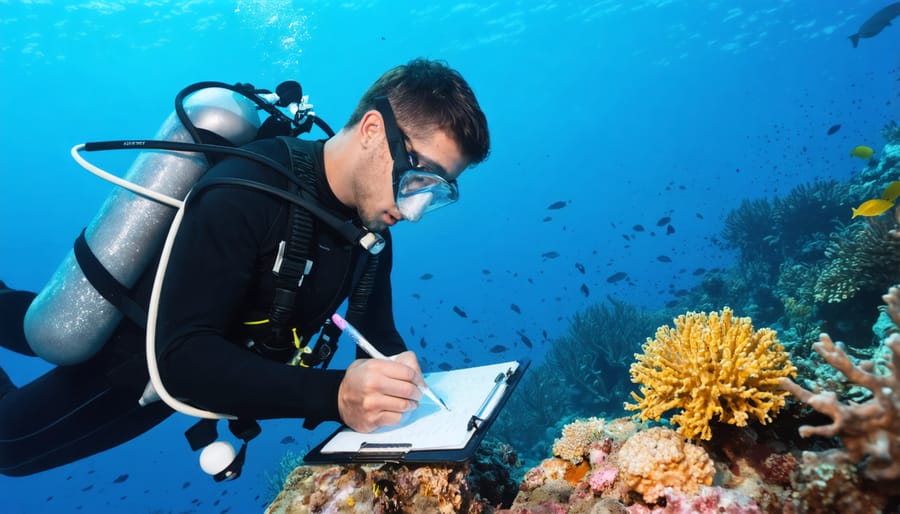
The Wonders of Marine Ecosystems
Coral Reefs: The Rainforests of the Sea
Coral reefs, often referred to as the rainforests of the sea, are among the most biodiverse and productive ecosystems on Earth. These underwater marvels support an astounding variety of marine life, from colorful fish and crustaceans to sea turtles and marine mammals. Coral reefs provide critical habitats for countless species, many of which are found nowhere else on the planet. The complex structures formed by coral colonies offer shelter, breeding grounds, and feeding areas for a wide array of organisms. In fact, although coral reefs cover less than 1% of the ocean floor, they are home to an estimated 25% of all marine species. The biodiversity found within coral reefs is not only crucial for the health of the ocean but also provides numerous benefits to humans, such as food security, coastal protection, and economic opportunities through tourism and fisheries. However, these delicate ecosystems face multiple threats, including climate change, overfishing, and pollution. Protecting and conserving coral reefs is essential to maintain the incredible biodiversity they support and ensure the long-term sustainability of marine life and the communities that depend on them.

Kelp Forests: Underwater Oases
Kelp forests are vibrant underwater ecosystems that thrive along the coastlines of many temperate regions around the world. These towering underwater forests, composed of large brown algae, provide critical habitats for a diverse array of marine life. The dense canopies and intricate holdfast systems of kelp create a complex, three-dimensional structure that offers shelter, nursery grounds, and feeding sites for numerous species, including fish, invertebrates, and marine mammals.
Kelp forests also play a vital role in the marine food web, supporting a wide range of organisms. Many fish, such as rockfish and greenling, find refuge among the kelp blades, while sea otters and other marine mammals hunt for prey within the forest. Additionally, kelp is a direct food source for various herbivorous species, including sea urchins and abalone.
Beyond their ecological importance, kelp forests provide numerous ecosystem services. They help protect coastlines by absorbing wave energy, reducing erosion, and stabilizing sediment. Kelp forests also have a remarkable capacity to sequester carbon dioxide from the atmosphere, making them valuable allies in the fight against climate change.

Threats to Marine Biodiversity
Climate Change: The Silent Killer
Climate change is a silent killer that wreaks havoc on marine ecosystems, threatening the delicate balance of life in our oceans. As atmospheric carbon dioxide levels rise, the oceans absorb more CO2, leading to a process called ocean acidification. This alteration in seawater chemistry makes it harder for calcifying organisms, such as corals and shellfish, to build their protective structures. The result is a cascading effect on the entire marine food web, as these organisms provide shelter and sustenance for countless other species.
Rising temperatures due to climate change also have devastating consequences for marine life. As oceans warm, they lose their ability to hold dissolved oxygen, creating dead zones where marine life cannot survive. Additionally, rising temperatures cause coral bleaching events, where stressed corals expel their symbiotic algae, leaving them vulnerable to disease and death. The loss of coral reefs, which are home to over 25% of all marine species, has far-reaching implications for biodiversity and the communities that depend on them.
Furthermore, climate change is causing sea levels to rise, threatening coastal habitats and the species that rely on them. As sea levels rise, low-lying areas, such as salt marshes and mangrove forests, become submerged, depriving marine life of critical nursery grounds and protection from predators. The loss of these habitats not only affects marine biodiversity but also diminishes the natural defenses that protect coastal communities from storms and erosion.
Overfishing: Emptying the Oceans
Overfishing has become a global crisis, with unsustainable fishing practices pushing many marine species to the brink of collapse. Industrial fishing fleets, equipped with advanced technology and massive nets, scour the oceans, capturing fish faster than they can reproduce. This relentless pursuit of profit has led to the depletion of once-abundant fish populations, upsetting the delicate balance of marine ecosystems.
The impact of overfishing extends far beyond the targeted species. As key species are removed from the ecosystem, the entire food web is disrupted. Predators, deprived of their primary food sources, struggle to survive, while prey species, released from predation pressure, can multiply unchecked, leading to further imbalances. This cascading effect ripples through the ecosystem, altering its structure and function.
Moreover, destructive fishing practices, such as bottom trawling, cause irreparable damage to sensitive habitats like coral reefs and seagrass beds. These underwater oases, which serve as nurseries and shelters for countless marine species, are left barren and lifeless in the wake of industrial fishing.
The consequences of overfishing are not limited to the oceans. Coastal communities that rely on fishing for their livelihoods and food security are hit hard by dwindling fish stocks. Traditional small-scale fisheries, which have sustained communities for generations, are being pushed out by industrial fleets, leading to social and economic upheaval.
Urgent action is needed to address the crisis of overfishing. Governments, fishing industries, and consumers must work together to promote sustainable fishing practices, establish marine protected areas, and support the recovery of depleted fish populations. By making informed choices and advocating for change, we can help restore the health and resilience of our oceans, ensuring that they continue to thrive for generations to come.
Conservation Efforts and Solutions

Scientific Research: Understanding to Protect
Scientific research is crucial for understanding and protecting marine ecosystems. Marine biologists and ecologists work tirelessly to identify threats, monitor populations, and develop effective conservation strategies. Through rigorous data collection and analysis, researchers can assess the health of marine habitats, track changes over time, and pinpoint areas of concern. This knowledge is essential for informing policy decisions, guiding management practices, and raising public awareness about the importance of marine conservation.
One such researcher is Dr. Elena Ramirez, a marine biologist who has dedicated her career to studying coral reefs. “When I first began my research, I was struck by the incredible diversity and beauty of these underwater worlds,” she recalls. “But I also witnessed firsthand the devastating impacts of climate change, overfishing, and pollution.” Dr. Ramirez’s work involves monitoring coral reef health, investigating the factors contributing to their decline, and developing innovative restoration techniques. Her findings have been instrumental in shaping conservation efforts and inspiring others to take action.
By supporting scientific research and collaborating with experts like Dr. Ramirez, we can gain a deeper understanding of the complex dynamics within marine ecosystems. This knowledge is the foundation for developing targeted, evidence-based solutions that address the most pressing threats facing our oceans. Through continued research and collective action, we can work towards a future where marine life thrives, and the delicate balance of these incredible ecosystems is preserved for generations to come.
Legal Frameworks: Policies for Protection
Laws and regulations play a crucial role in safeguarding marine species and habitats from overexploitation and degradation. One of the most effective legal frameworks is the establishment of marine protected areas (MPAs). These designated zones restrict human activities, such as fishing, mining, and development, to allow marine life to thrive undisturbed. By creating a network of MPAs, nations can protect critical breeding grounds, nurseries, and migratory routes for various species.
Another important legal tool is the implementation of fishing quotas and seasonal restrictions. These measures aim to prevent overfishing by setting limits on the number and size of fish that can be caught within a specific timeframe. By allowing fish populations to recover and reach sustainable levels, quotas help maintain the delicate balance of marine ecosystems.
International agreements, such as the Convention on Biological Diversity and the United Nations Convention on the Law of the Sea, provide a framework for global cooperation in marine conservation. These treaties encourage nations to work together in managing shared resources, combating illegal fishing, and addressing threats like pollution and climate change.
However, the effectiveness of legal frameworks depends on proper enforcement and monitoring. Governments must allocate sufficient resources to ensure compliance with regulations and penalize violators. Additionally, engaging local communities in the decision-making process and providing alternative livelihoods can foster a sense of ownership and stewardship over marine resources.
By implementing and enforcing comprehensive legal frameworks, we can create a safety net for our fragile marine ecosystems, ensuring their resilience and ability to support diverse life forms for generations to come.
How You Can Make a Difference
Volunteer Opportunities: Be an Ocean Guardian
The Marine Biodiversity Conservation Center offers a variety of volunteer opportunities for individuals passionate about protecting our oceans and the incredible life they support. By becoming an Ocean Guardian, you can actively contribute to marine conservation efforts and make a tangible difference in the health of our planet’s ecosystems.
One of our flagship volunteer programs is the Beach Clean-Up Initiative. Participants gather to remove litter and debris from local beaches, preventing harmful materials from entering the ocean and endangering marine life. Not only does this program directly improve the coastal environment, but it also raises awareness about the impact of human activities on marine ecosystems.
For those interested in hands-on conservation work, our Coral Reef Restoration Project is an excellent opportunity. Volunteers receive training from experienced marine biologists to help propagate and transplant coral fragments onto damaged reef sites. By actively participating in the restoration process, volunteers contribute to the recovery of these vital underwater ecosystems.
Education and outreach are crucial aspects of marine conservation. Our Marine Education Volunteer Program allows individuals to share their knowledge and enthusiasm with the public. Volunteers assist in developing and delivering engaging educational programs, such as guided beach walks, school presentations, and community workshops. By inspiring others to appreciate and protect marine life, these volunteers play a vital role in fostering a culture of conservation.
Whether you prefer working directly with marine life, educating others, or contributing to research efforts, the Marine Biodiversity Conservation Center has a volunteer opportunity that aligns with your interests and skills. By dedicating your time and energy as an Ocean Guardian, you become an integral part of the global movement to protect and preserve our incredible marine ecosystems for generations to come.
Spread the Word: Educate and Inspire
Sharing your passion for marine conservation can make a real difference in protecting our oceans. By educating others about the importance of marine ecosystems and the threats they face, you can inspire them to take action. Share fascinating facts, stunning photos, and personal stories on social media to engage your friends and followers. Encourage them to make small changes in their daily lives, such as reducing plastic use or supporting sustainable seafood. Join local beach cleanups or organize your own to involve your community in hands-on conservation efforts. Together, we can create a ripple effect of positive change for our marine world.
Conclusion
In conclusion, protecting our planet’s marine ecosystems is a shared responsibility that requires collective action from individuals, communities, and nations alike. While the challenges facing our oceans may seem daunting, every small step we take towards conservation can have a significant impact. By making conscious choices in our daily lives, supporting sustainable practices, and actively participating in conservation efforts, we all have the power to contribute to the preservation of these vital ecosystems.
As we work together to address the threats facing marine life, it is crucial to remember the resilience and adaptability of these remarkable creatures. With dedicated research, innovative solutions, and unwavering commitment, we can create a future where our oceans thrive, and marine biodiversity flourishes. The stories of successful conservation efforts and the passion of those working tirelessly to protect our seas serve as a beacon of hope, reminding us that positive change is within reach.
Let us embrace the opportunity to be stewards of our marine ecosystems, ensuring that future generations can marvel at the wonders beneath the waves. Together, we can create a legacy of healthy, vibrant oceans that continue to inspire and sustain life on our planet. The power to make a difference lies within each of us, and it is through our collective efforts that we can secure a brighter future for our oceans and all the incredible species that call them home.
jessica
Ava Singh is an environmental writer and marine sustainability advocate with a deep commitment to protecting the world's oceans and coastal communities. With a background in environmental policy and a passion for storytelling, Ava brings complex topics to life through clear, engaging content that educates and empowers readers. At the Marine Biodiversity & Sustainability Learning Center, Ava focuses on sharing impactful stories about community engagement, policy innovations, and conservation strategies. Her writing bridges the gap between science and the public, encouraging people to take part in preserving marine biodiversity. When she’s not writing, Ava collaborates with local initiatives to promote eco-conscious living and sustainable development, ensuring her work makes a difference both on the page and in the real world.
